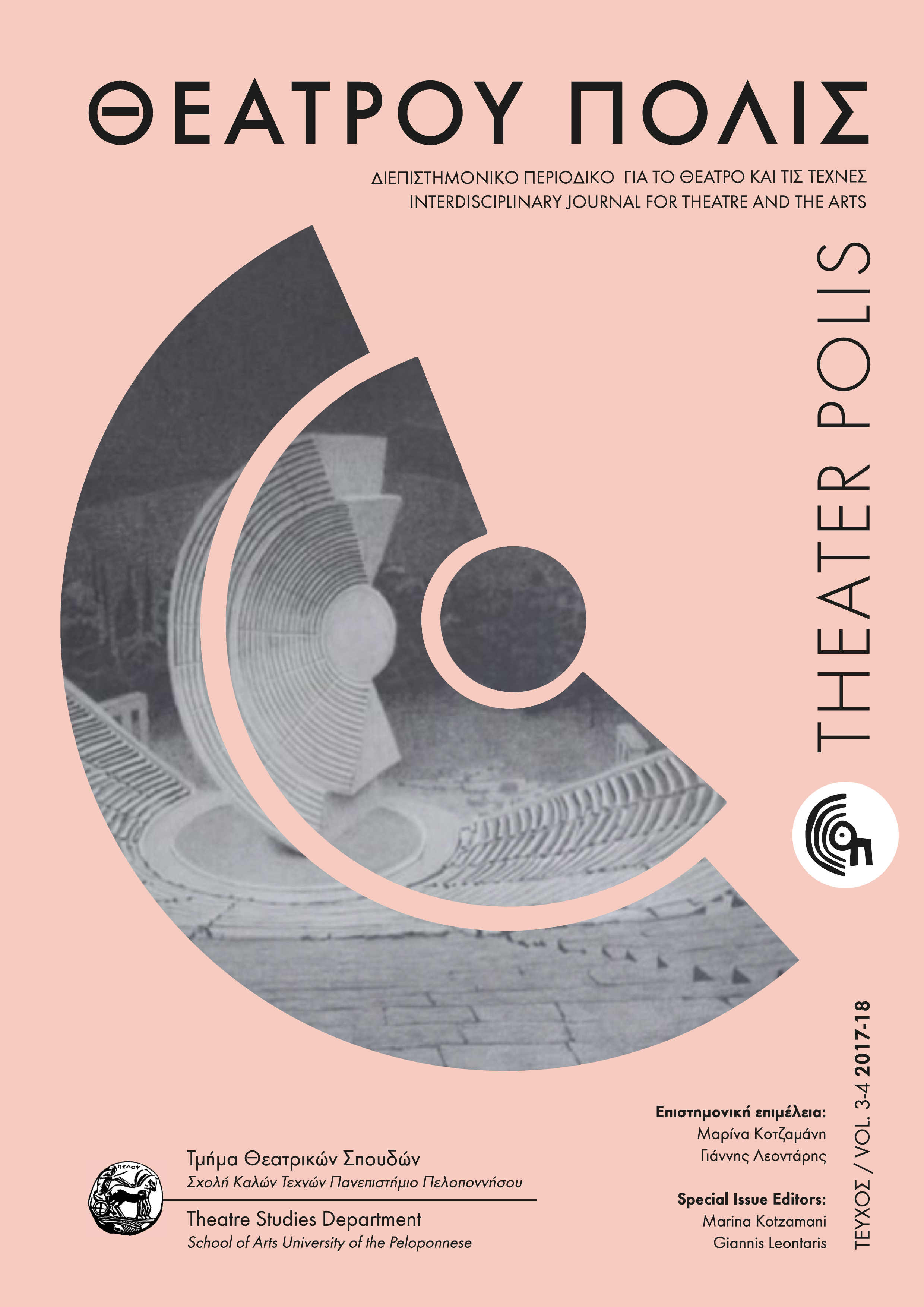The International Impact of Syracuse Festival in 1921: Aeschylus' Choephori (The Libation Bearers).
Abstract
This work primarily examines the reasons for the creation of the Syracuse Festival, its
ideological and aesthetic base and the steps taken leading to the First and Second
Cycle, focusing on the performances of “Agamemnon” and the “Choephori”, in 1914
and 1921 respectively. The interest in this research focuses on the route followed and
the actions taken by the organizers in the planning and artistic domain so as to change
this festival from being of peripheral interest in 1914, to the centre of international
interest in 1921. In this light the two most characteristic scenes of the performance of
the “Choephori” of the Second Cycle are presented and followed by special
reference to the reaction of the numerous greek members of the audience and whose
experience seems to have influenced the future development of open-air spectacles
and the organizing of the first festivals in Greece.
Article Details
- How to Cite
-
ΜΗΝΙΩΤΗ Ν. (2023). The International Impact of Syracuse Festival in 1921: Aeschylus’ Choephori (The Libation Bearers). Theater Polis. An Interdisciplinary Journal for Theatre and the Arts, 1(1), 65–80. Retrieved from https://ejournals.epublishing.ekt.gr/index.php/theatrepolis/article/view/34443
- Section
- Articles
Τα πνευματικά δικαιώματα των δημοσιευμένων άρθρων ανήκουν στο περιοδικό. Απαγορεύεται η μερική ή/και ολική αναδημοσίευση κειμένων που δημοσιεύονται στο περιοδικό, χωρίς την συγκατάθεση της των Επιμελητών ή της Συντακτικής Επιτροπής και επιβάλλεται αναφορά στην πρώτη δημοσίευσή τους στο περιοδικό Θεάτρου Πόλις.



